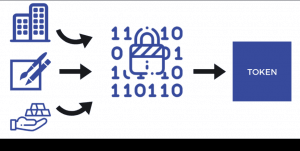The insurance industry has had a tough time trying to adapt to maturing markets, economic turbulence, and dynamic customer preferences. This has forced insurers to seek a “winning formula” that will ensure profitability and sustainable long-term growth in an industry overwhelmed by constant disruptions. Part of the ‘winning formula’ for most insurance firms is integrating newer technologies and business-model innovations into their legacy environments.
Blockchain technology can potentially disrupt the insurance industry by improving operational efficiency and mitigating the obstacles facing the insurance sector. As such, insurers are becoming increasingly open to embracing this disruptive technology. Here is how Blockchain is being used in the insurance industry.
1. Fraud detection and claim processing
Insurance firms have for long grappled with fraudulent claims, which accounts for $80 billion in losses per year. Even after investing in anti-fraud technologies, insurers have not been successful in curbing fraud, which eventually robs them off. What’s worse is that consumers are equally affected by fraudulent claims as they are forced to pay more for insurance premiums.
Most of the fraud cases stem from data fragmentation in the insurance industry. It’s, therefore, possible for fraudulent claims to slip through traditional anti-fraud technologies leading to losses. Besides, claims processing is mainly paper-dependent, which creates room for criminals to modify information and hence make fraudulent claims.
Blockchain helps insurers solve the fraud problem by providing a transparent and decentralized platform on which data is recorded. In turn, this eliminates the paperwork required in claim processing, meaning that the data can’t be modified. Most importantly, the data can be shared among the involved parties, making it easy to validate a claim.
For example, in travel insurance, an airline company can share flight cancellation data with an insurance firm to ascertain that indeed the flight has been canceled. The insurers will then compensate the consumer who is insured against flight cancellation. Moreover, blockchain is tamper-proof, meaning fraudsters can’t modify the recorded data.
2. Data management
In the insurance industry, data is essential in the formulation of more customer-based insurance policies rather than just mere products. For example, the automotive insurance sector can draw valuable insights from such data as driving time, behavioral statistics, acceleration, distance covered, and breaking patterns. With these insights, an insurance firm can develop accurate actuarial models and user-based insurance policies.
For most insurance firms, collecting this type of data has been easy, especially with the advent of the Internet of Things (IoT) devices. However, the problem comes with managing the collected data and storing it in an accessible fashion. With the existing infrastructure, insurance firms store their data in centralized data centers, making them prone to breaches. Even worse, these databases work in isolation, which jeopardizes the collaboration of different departments within a firm.
Blockchain can be used to manage the large volumes of data collected by insurance firms. Instead of expensive data centers, the technology offers a decentralized and secure network to store and process data. In turn, this promotes collaboration within a firm and even with other entities such as police departments, which also results in efficient claim processing.
3. Streamlining reinsurance
Reinsurance is a cover for insurers. Simply put, it is when an insurance firm buys an insurance policy from another firm to protect itself against certain risks. For example, a firm can take an insurance cover from another firm to protect itself against the increased cost of claim settlements resulting from mass health epidemics or natural disasters.
Inefficiencies plague the current model used in reinsurance. First off, the operations are manually processed and determined by a one-off contract. As such, a single contract is explicitly written to cover a specific event. This results in a single policy being divided between numerous insurers creating data silos that take lots of time to process. Also, an insurer doesn’t just negotiate with one reinsurer but with several of them, which further complicates the whole process. Each of these involved parties uses different data infrastructure resulting in slow data exchange, making the process costly and time-consuming.
Price Waterhouse Coopers estimates that if the reinsurance industry improves operational efficiency, then they can save up to $10 billion. The primary way to achieve this is by using a blockchain consortium network, which will allow the insurers and reinsurers to communicate and efficiently share data about policies. Besides, considering the fragmentation of a single policy, unified record-keeping in reinsurance is particularly essential.
4. On-demand insurance
As the name suggests, This is a flexible insurance model where policyholders easily turn their insurance policies on and off. Currently, the on-demand insurance market requires humans to pass a policy from quote, underwriting, to eventually issuance, which costs significant amounts of time and money while also exposing a policy buyer to risk.
On-demand insurance providers can trade blockchain technology for structured record-keeping from the policy’s inception to disposal. This would eliminate the clerical errors experienced in the current manual model. Built-in Smart contracts can also be deployed to initiate and terminate policies based on predetermined criteria automatically. This would mean fast policy formulation as well as quicker claim processing.
5. Micro-insurance
Micro-insurance is a policy that covers specific risks for regular premiums. The policy is designed for low-income families and individuals who, in most cases, are unbanked. As such, insurers rely on third-parties such as banks to link them with the policy clientele base.
To make reasonable profits from micro-insurance policies, an insurer needs high volumes of policies. However, the increased distribution cost may sometimes beat the low-profit margin despite a ready market for the policy.
Blockchain can be used to link insurers directly to the market, thereby eliminating the third-parties, thus reducing the cost of distribution. Digital tokens can be used to make insurance payments, making the policy even more affordable due to the reduced cost of transactions that come with digital assets.
Achieving widespread adoption of blockchain technology in the insurance industry
Like any other technology, it will take time before the insurance industry fully integrates blockchain into its systems. But, it doesn’t mean the industry can’t achieve widespread adoption of the technology. For that to happen, the following criteria must be met:
Internal proof of concept
The first step towards adoption is for insurance firms to start in-house projects experimenting with blockchain. This will help them first solve their unique problems affecting efficiency in the firm before trying to solve the challenges facing the wider insurance industry. At the same time, experimenting with blockchain allows firms to learn how blockchain works, which then opens their understanding of how this technology can be applied in the industry.
Design customer-centric solutions
Blockchain solutions in the insurance industry should be designed with the needs of the customers in mind. Designing solutions-focused entirely on helping a firm may lock out customers since their needs are not met, or rather they are sidelined.
Conclusion
The need for blockchain is becoming more apparent in industries seeking to improve operational efficiencies for sustainable long-term growth. With this in mind, the insurance industry needs to embrace blockchain technology to solve the industry’s challenges and, consequently, improve customers’ experience.





